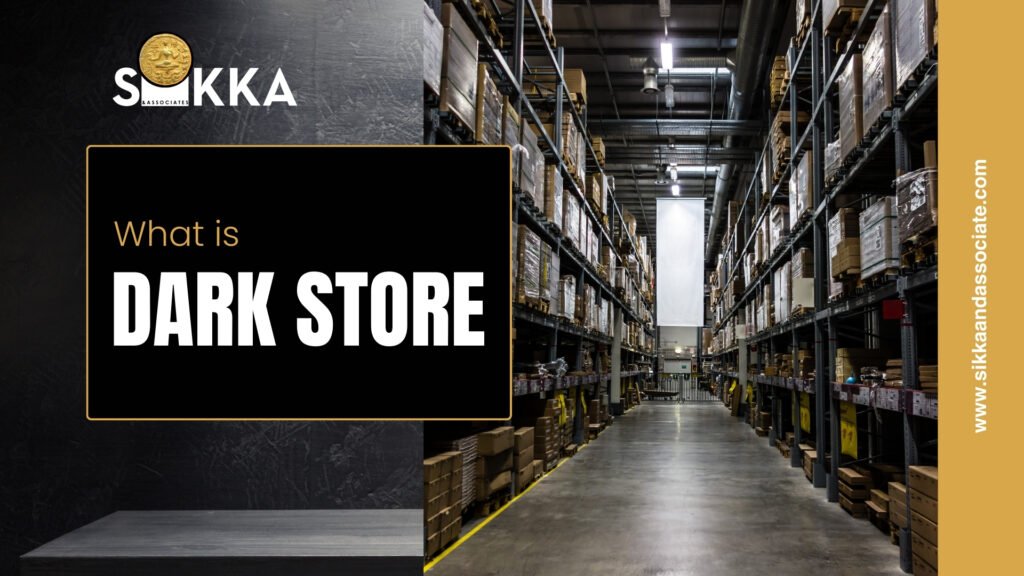What is a Dark Store and Why is it Gaining Popularity?
As consumer behavior evolves with digital transformation, so do the supply chain models that serve them. One of the most fascinating shifts in retail and logistics is the emergence of dark stores — a concept that’s reshaping how products move from warehouses to doorsteps. Though invisible to the average shopper, dark stores are becoming vital cogs in the machinery of modern commerce.
Understanding the Concept: What is a Dark Store?
A dark store is a retail facility that resembles a traditional supermarket or convenience store but is not open to customers. Instead, it functions exclusively as a fulfillment center for online orders. These centers are purpose-built or adapted to stock items in a way that makes picking and packing faster and more efficient for delivery personnel.
Unlike large distribution warehouses that serve entire regions, dark stores are typically smaller, decentralized units located in urban or semi-urban areas, much closer to customers. Their primary goal is to enable faster last-mile delivery and serve as the backbone for quick-commerce platforms.
You might imagine a dark store as a private grocery store where no shoppers walk the aisles — only employees do, quickly collecting items to fulfill digital orders.
How Do Dark Stores Operate?
-
Strategic Location: These stores are situated within densely populated neighborhoods to allow for quick delivery turnarounds — often within 10 to 30 minutes.
-
Tech-Enabled Inventory: Using modern inventory management systems, items are stored and organized for efficient retrieval. AI and data analytics help predict demand patterns, reduce out-of-stock situations, and optimize shelf arrangements.
-
Order Fulfillment: When an online order is placed via an app or website, store employees (also known as pickers) quickly collect the items, pack them, and hand them over to a delivery agent.
-
Delivery Dispatch: Orders are delivered using either in-house delivery fleets or third-party logistics providers, depending on the company’s model.
Why Are Dark Stores Gaining Popularity?
1. Post-Pandemic E-commerce Boom
COVID-19 drastically accelerated the shift to online shopping. Lockdowns, safety concerns, and the convenience of home delivery drove massive demand for groceries, pharmaceuticals, and daily essentials through e-commerce channels. Businesses had to reimagine supply chains to keep up — and dark stores became a natural solution.
2. Rise of Quick Commerce (Q-commerce)
Consumers today value speed and convenience more than ever. Q-commerce platforms promise groceries, snacks, medicines, and other essentials delivered in as little as 10 to 15 minutes. Dark stores make this possible by being located close to customers and optimized for ultra-fast fulfillment.
3. Cost and Efficiency
Operating a customer-facing retail outlet involves numerous overheads — display setups, customer service, in-store marketing, and more. Dark stores strip these down, focusing only on what matters: fast, accurate fulfillment. They’re also better suited to handle bulk orders and high-frequency purchasing patterns.
4. Data-Driven Operations
Dark stores are designed with technology at the core. Inventory, employee productivity, and delivery metrics are continuously monitored and optimized. Unlike traditional retail, every transaction generates data that can be used for smarter decision-making — from inventory planning to dynamic pricing.
5. Urban Real Estate Optimization
With many commercial spaces lying vacant post-pandemic, retailers are converting underutilized properties — including shuttered shops, basements, and even parking garages — into dark stores. This approach revitalizes idle real estate while serving the growing demand for quick deliveries.
Who’s Leading the Dark Store Revolution?
Globally and locally, several companies are tapping into the dark store model:
-
India: Blinkit, Zepto, BigBasket, Dunzo (Now about to close), and Swiggy Instamart are heavily investing in dark stores across metros.
-
Europe: Getir, Gorillas, and Flink have emerged as pioneers of dark store-driven q-commerce.
-
USA: Amazon Fresh and Instacart use hybrid fulfillment models that increasingly rely on micro-fulfillment centers and dark stores.
-
Middle East: Talabat and Noon are experimenting with dark store operations in high-density areas to meet growing online demand.
Even traditional supermarkets like Tesco (UK), Carrefour (France), and Walmart (USA) have adopted dark store or hybrid models to serve their online customers more effectively.
Challenges of the Dark Store Model
Despite its growing popularity, the dark store model isn’t without its challenges:
1. High Operational Costs
Maintaining a network of dark stores can be expensive — with fixed costs like rent, labor, electricity, packaging material, and tech infrastructure. While they offer better margins than traditional stores in some cases, profitability remains a concern for many players, especially in the ultra-fast delivery space.
2. Regulatory Hurdles
Urban zoning regulations in many countries haven’t kept pace with this trend. Some city councils have begun raising concerns about noise, traffic, and disruption caused by 24/7 dark stores operating in residential neighborhoods.
3. Environmental Impact
The model promotes rapid, small-quantity deliveries — which can lead to increased emissions, over-packaging, and delivery inefficiencies. Unless optimized with electric vehicles, green packaging, and route planning, dark stores could contribute to environmental strain.
4. Workforce and Labor Rights
The gig economy often powers dark store deliveries. While it creates job opportunities, it also raises questions about fair wages, job security, and working conditions for both delivery personnel and in-store staff.
The Future of Dark Stores
Looking ahead, dark stores are poised to play a central role in retail, especially as:
-
Hyper-localization becomes key: Retailers seek to reduce delivery windows further, making proximity more critical than ever.
-
Technology becomes smarter: Integration of AI, robotics, and IoT could further streamline dark store operations, making them leaner and more sustainable.
-
Hybrid models evolve: Some companies may adopt a blended approach, operating dark stores alongside traditional outlets and even allowing limited customer access for pickups.
Moreover, the model may expand beyond groceries — think electronics, fashion, books, or even home improvement tools — all delivered in under an hour.
Conclusion
Dark stores are not just a new trend — they show how shopping habits, technology, and city life are changing. People want faster and more convenient delivery, and dark stores help make that possible.
As businesses work to balance speed, efficiency, and sustainability, those who use dark stores in a smart and responsible way will have an advantage in the future of retail and delivery.
At We Sikka and Associates, we are experts in dark store leasing. With deep knowledge of retail spaces and logistics, we help businesses find the right locations to set up successful dark stores and grow their operations with confidence.






